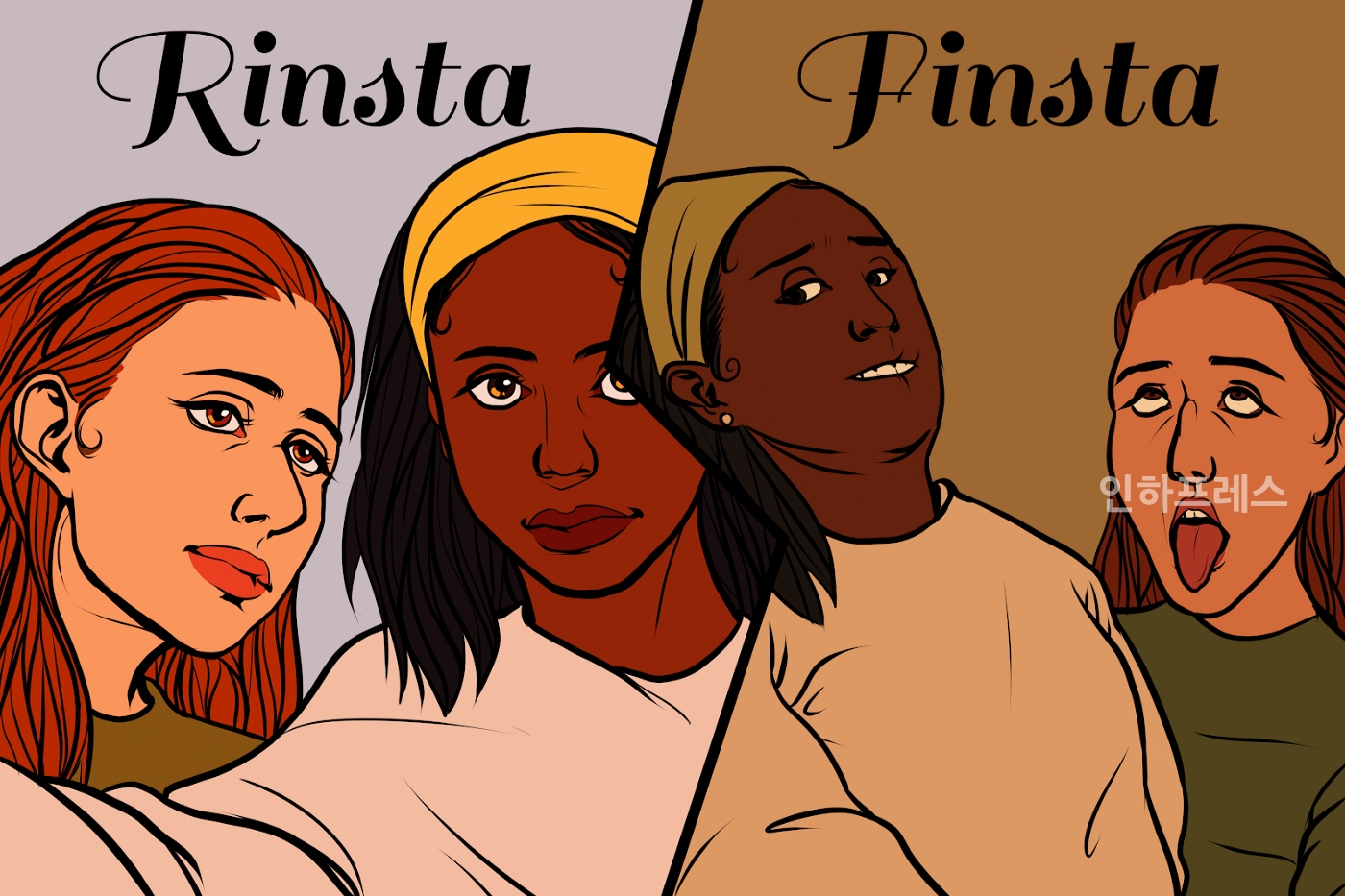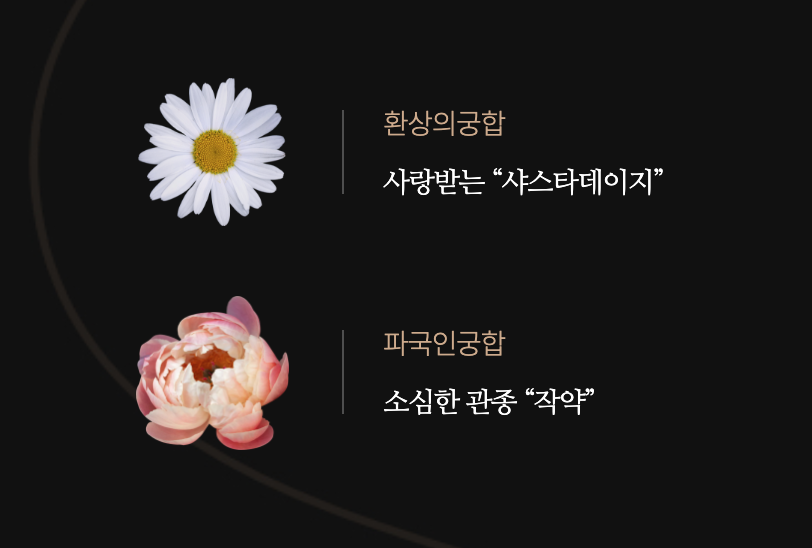Nowadays, many types of self-diagnosis tests have become popular among young people. Why are people so enthusiastic about these tests that can define themselves? It is because of their desire to find their place through comparison with others in society where diversity is emphasized and requires distinct personalities. Let’s learn more about ‘Labeling Game’ which fulfills the new MZ generation’s style of sharing or comparing their identity with others and expressing themselves well as a result.
What is Labeling Game?
 |
The word ‘label’ means ‘a sign’ indicating information about things or ‘a tag’ describing a person’s personality. Therefore, Labeling Game can be defined as a game to categorize one’s identity into a specific type and then eliminates the uncertainty of identity by following or agreeing with the specifics of that type of lifestyle. We also show each different lifestyle and identity on social media by creating multiple accounts.
 |
| Illustration by Rebecca Smith |
For example, in Instagram, there is a so-called ‘RINSTA (real Instagram account)’, an account thatis operated openly to everyone and a ‘FINSTA (fake Instagram account)’ that is operated privately. While ‘RINSTA’ shares a taste for something others can envy or something you want to show off to people who you don’t really know, ‘FINSTA’ records another side of yourself by sharing personal life or posing hobbies that only you want to share with close friends. According to the 2019 Social Media Trend Report by Global Web Index, a market research organization, the average person has 8.1 social media accounts. Such diverse self-realizations through different accounts are becoming common. Therefore, in this increasingly difficult atmosphere of society to define one’s identity, modern people want a ‘label’ to explain themselves. Also, Labeling Game depends on how much empathy we receive from others. This is because one’s identity is solidified when we get empathy in the form of a comment containing other people’s opinions, not just meaningless ‘Likes’. This Labeling Game not only confirms one’s real identity in reality, but also evolves into a ‘self-identification game’ by sharing and comparing results with others. Through various tests, consumers identify themselves and also change their consuming habits according to their type.
 |
Labeling Game also can be seen as modern people’s desire to find their ‘real’ self in this multi-persona society. Multi-persona refers to the multiple identities of people in modern society where people transition personas rapidly, depending on the situation. In these highly developed digital communication society, deciding one’s is a complex question. This is because one’s identity is unknowingly influenced by others due to digital media. As a result, people who find it difficult to look for their own orientation are interested in different online self-diagnosis tests to find themselves. In this process, people want to be assured of the existence of ‘I’ not from self-seeking, but from some objective indicator or recognition of others. Eventually, the term ‘Labeling Game’ was presented from a series of processes in which people want to define themselves through data, tests, metaphors, and so on as they find it difficult to define themselves.
Steps in the Labeling Game
What are the processes and methods of the play that are used to type and define the self? Let’s take a look at three main steps.
 |
The first step of labeling yourself is to quantify yourself with data from test to select the type. This step is done by selecting and responding to questions that correspond to the person and dividing categories according to the personality or characteristics based on the results. The most famous example of this quantification is ‘MBTI’ test. MBTI test is a personality type test created based on the psychological typology of Carl Jung, a Swiss psychoanalyst. E and I, which classify outward and inward, S and N, which express senses and intuitions, T and F for thinking and emotion, and finally, J and P for judgement and cognition and these four opposing preference indicators are combined into 16 categories. For example, if a certain person gets INFJ, that person is classified as person who has the ‘Inward, Intuitive, Emotional, Judgmental’ personality. The MBTI personality type test is currently very popular that there were about 35.8 million posts when #MBTI searched in Instagram on January 21, 2021.
 |
After quantifying your characteristics into one category, we go through the step that adds fun by metaphorization. An effort to find one's own characteristics through a metaphor and labeling one’s identity through familiar objects or food is called the metaphor method. For example, psychological test which personify personality test results based on snacks and matching that snack with similar personalities has been popular. This test is called ‘SPTI’ which is a combination of ‘Snack’ and ‘MBTI’, a personality test produced by ‘Snackpot’, a company that analyzes users’ tendencies and recommends snacks or drinks accordingly. The result allows people to see their personality type as a snack in easy and fun way by dividing 16 familiar snacks such as Bbangtoa, Yeonyanggang, Milk Jelly, and Together according to the personalities. For example, the result of ‘softy milk jelly’ shows that he/she has soft personality that can accommodate variety of things or ‘sniffling mint candies’ has cool personality.
 |
After labeling yourself through quantification by testing and metaphorization by comparing, finally the results are shared and verified with others. There is always a ‘Share on Facebook/Instgram/Twitter/KakaoTalk’ button on the test results pages related to various Labeling Games. By making it easy to access social media with just one button, it allows a person to share the results of personality test with friends. Sharing the results voluntarily, people share the indicators that express them and seek mutual sympathy. This process of sharing test results about the self is the most critical element in the Labeling Game. It also means sharing another aspect of the self and on the other hand, it can be a method of showing confidence, and it is also a process of starting a conversation with people who have different tendencies from me. For four days from 20 to 23 November, 2020, “Flower Test” and “Flower MBTI” was the top search keyword on major social media portals, making headlines. This test is also a personality test and if people answer a few questions according to their preference, the result are accordingly produced with a unique flower. Moreover, the result also shows a flower that matches you and flowers that make bad combination and lead people to share the results so that people can find someone who fits or is different from their personality. As of 24 November, 2020, more than 1.13 million cases have been shared through the promotion of the sharing and fun matching the tendencies with acquaintances. Internet users who tried the flowers test said, “I got a balloon flower!”, “I took this flower test yesterday, too. People who got Peony… where are you?” and many other reviews were posted on social media, showing skyrocketing interests.
 |
New consumption behavior
The modern self-seeking game is not only in the realm of philosophy, but also expanding into the realm of consumption. For people who are living in a modern consumer society, the self is defined by consumption, not as a medium to help reflect one’s self. Let’s learn about the new generation who leads new consumption style and changing consumption patterns with Labeling Game.
‘MZ Generation’, who leads the Labeling Game, is a combination of ‘millennial generation’, who were born from the 1980s to 2004, and ‘generation Z’, who were born between 1995 and 2004. Currently between the ages of 15 to 39 years old, they are the generation with the best production and consumption capabilities and are the main agents of all services and goods. Therefore, the majority of companies are concerned with MZ generation as significantly important consumer targets. As it is a generation who are familiar with the digital world, companies pay attention to the ‘fun’ characteristics since MZ generation continues to pursue new stimuli across the contents. So, Labeling Game is well suited as a new marketing method for the people who are familiar with the digital world, enjoying trends at very fast pace and wanting to meet their need for fun. The key is to identify the characteristics of MZ generation, analyze the data to create something to enjoy and drive the voluntary sharing process. Adapting these characteristics, companies and brands are providing consumer services related to various Labeling Games for MZ generation.
Modern people’s consumption has been greatly influenced by the ‘Panoplie effect’. The Panoplie effect refers to the desire to be a member of certain group to follow and to purchase the same products that someone in that group had bought before. The act of purchasing the same product after watching an advertisement that says ‘Products used by famous celebrity ooo!’ leads consumers to feel that they are on the same level as a celebrity. This can be one example. Buying through the Labeling Game can be called ‘modern Panoplie effect’. The difference between consumption through Labeling Game and the traditional Panoplie effect is that the groups that consumers want to belong to changes little by little. In the past, if you followed the purchases of a coveted group it was practically difficult to be a member of the group like celebrity or a millionaire. But now people pursue the consumption habits of groups that can express their personality well or groups that they can belong to in reality. Also, in the past, you would choose a brand based on object you aspire to, to express yourself, but now you have a more casual relationship with the role of ‘I think I’m this kind of person since I bought this brand.’ In other words, the Panoplie effect, which used to be upward or vertical in the past, has changed to being mutually and horizontally through the current Labeling Game.
Labeling Marketing
 |
In fact, marketing using MBTI, a part of Labeling Game, has been soaring since the first half of 2020 when it showed a sharp increase in Naver keyword analysis. Let's find some examples of advertising effects targeting MZ generations by using Labeling Game.
 |
As the Labeling Game has become a trend, each company actively used it for marketing and attracting people's attention. In 15-28 June, 2020, ‘Market Curly’, an online food market, also conducted a test with the theme of "Finding my type of happiness through psychological test, If I'm Food?" The test compared individual tendencies to food and presented the results with the type of friend who fits well with you or not. Market Curly also offered events such as a 10% discount for customers who entered through Labeling Game and a 2,000 won discount coupon if you share your happiness type with hashtags on Instagram. This made it possible to attract new members who sign up to use the provided coupons, resulting in a natural marketing effect that extends from participation to consumption. After completing the psychological test, people posted their results on Instagram or Twitter and encouraged others to participate to find people who matches them. From the company's perspective, they can promote their brand naturally by offering brand-related experiences to consumers and create positive impressions.
 |
The Commerce Portal ‘11th Street’ hosts the largest "10th Day Festival" every November for 10 days. In particular, in 2020, 11th Street planned to promote the event and attract new customers through the "Previous Life Item Test" game made by ‘방구석연구소 (the corner lab)’. ‘방구석연구소(the corner lab)’ is designed to provide marketing tools to various brands by producing a series of Labeling Games as participatory platform contents. The test was conducted by answering 13 questions given and showing the shopping items that matches. In the results, 16 types such as 'Payment is made in Hwimori Jangdan Kkwaenggwari' and 'SodalGuji that goes only one road' are named to add fun elements. Additionally, they explained the characteristic and behavioral patterns of the results specifically and draw empathy by linking testers to shopping tendencies. At the end of the results, they insert the ‘11th Street’ link to encourage participants to purchase the products without difficulty. By these methods, label marketing, where users can take surveys and receive different results, gives consumers new enjoyment. Tests through label marketing by ‘11th Street’ ranked No. 1 and No. 2 in the top 10 real-time search terms on the day of its release, No. 5 in the top 20 rankings, and recorded 130,000 participants for two weeks. SK Planet 11th Street achieved a record all-time high of 64 billion won in daily trading during the last day of the event, proving considerable promotional results. Jang Jin-hyuk, head of SK Planet's 11th Street Business Division, said, "As the trading volume is estimated to be the highest ever in the domestic distribution industry, it will be the first online shopping mall to easily exceed KRW 1 trillion in November."
With less social contact due to covid-19, the process of finding the self-identity of modern people, the ‘Labeling Game’, has evolved into a kind of play beyond self-checking of reality. As these concerns have shifted from daily life to natural consumption patterns, what Labeling Game means to our industries has changed significantly. Now, brands should know how to create a sense of an exact match between brand identity and their targeting customers’ characteristics. And when they can interact and communicate with customers, they will be able to grow into a brand that leads new trends.
류현지 ryg023@naver.com
<저작권자 © 인하프레스, 무단 전재 및 재배포 금지>

![[보도] 제43대 총학생회 후보자 공청회 개최돼](/news/photo/202404/11686_5015_2626.png) [보도] 제43대 총학생회 후보자 공청회 개최돼
[보도] 제43대 총학생회 후보자 공청회 개최돼
![[보도] 제43대 총학생회 후보자 공청회 개최돼](/news/thumbnail/202404/11686_5015_2626_v150.jpg)
![[보도] 총학생회장 선거 열려···학생사회 대표자는?](/news/thumbnail/202403/11668_5014_266_v150.jpg)
![[보도] 무전공·계열제 논의···학생은 어디에?](/news/thumbnail/202403/11666_5011_2238_v150.jpg)
![[보도] 인하 70돌, 다양한 행사 이어져](/news/thumbnail/202403/11663_5009_165_v150.jpg)
